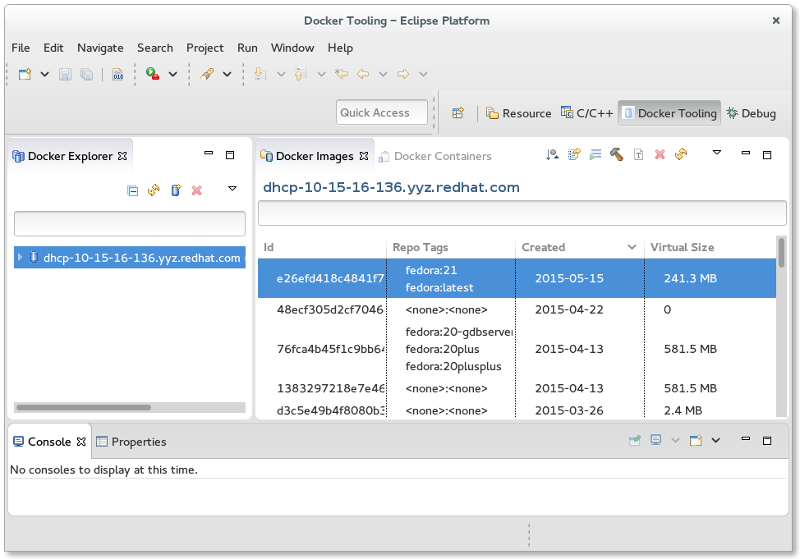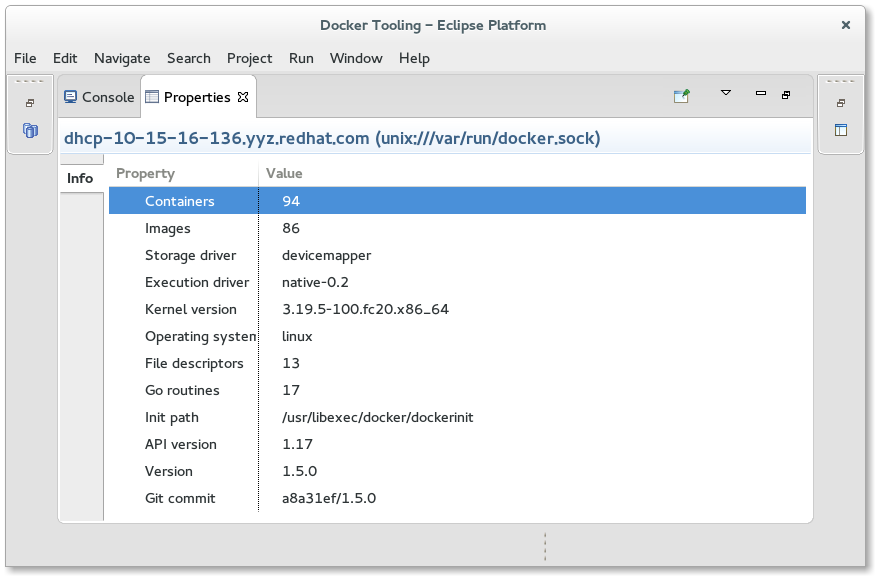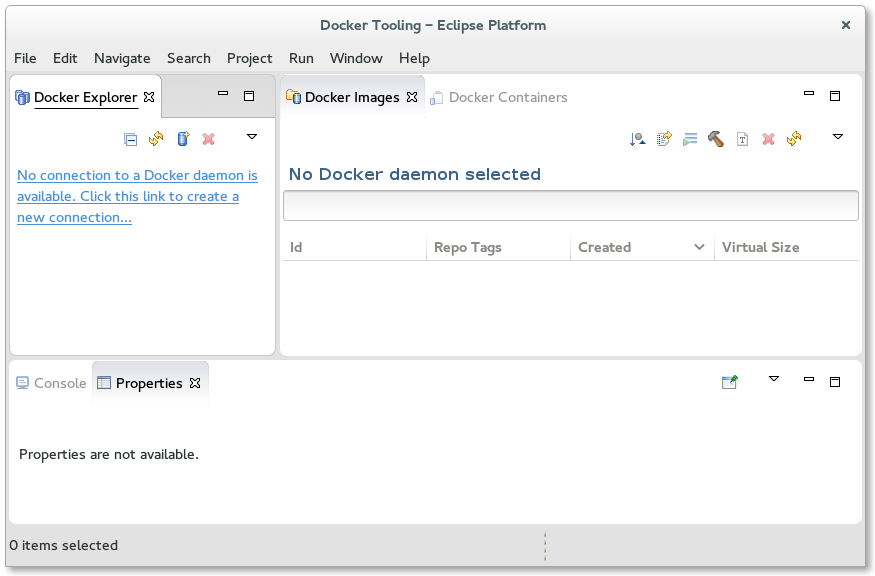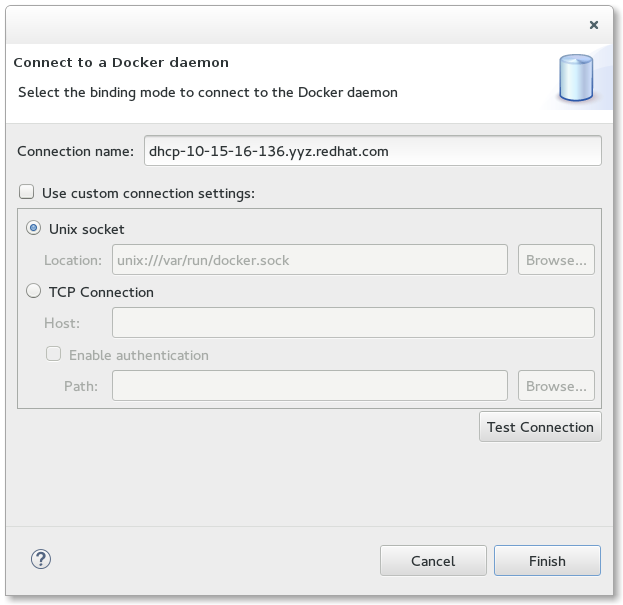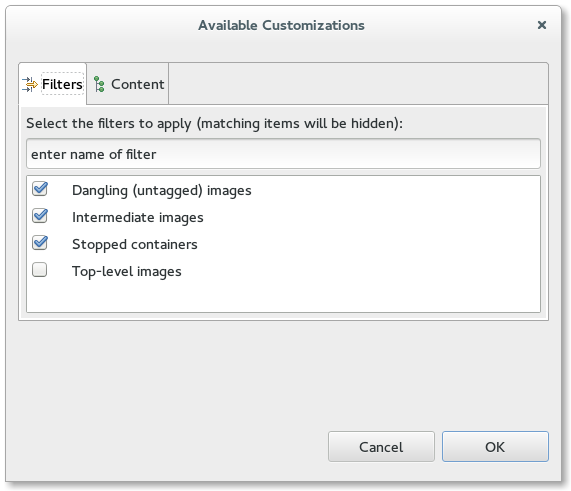Notice: this Wiki will be going read only early in 2024 and edits will no longer be possible. Please see: https://gitlab.eclipse.org/eclipsefdn/helpdesk/-/wikis/Wiki-shutdown-plan for the plan.
Linux Tools Project/Docker Tooling/User Guide
Overview
The Linux Tools Docker Tooling plug-ins allow a user to manage Docker Images and Containers with similar functionality found in the command-line docker command.
For details on Docker and the docker command, see the Docker web-site at http://www.docker.com
Docker Tooling Perspective
A new perspective known as the Docker Tooling Perspective is added.
This perspective brings up three new views added:
- Docker Explorer View - view for creating/managing connections to Docker daemons
- Docker Images View - view for managing Docker Images
- Docker Containers View - view for managing Docker Containers
In addition, the Docker Tooling Perspective adds the Console View and the Properties View.
The Console View is used to display logs of stdout/stderr output from Containers and in some instances, allow input to stdin. The Properties View allows clicking on various elements such as Connections, Images, and Containers and getting detailed info not readily shown in the various views mentioned above.
For example, clicking on a connection shows the following:
Docker Explorer View
The first view is a tree view of the various connections to Docker daemons. A connection to a Docker daemon is needed before any management of Docker Images or Containers can be performed. On initial start-up, there will be no connections and the Docker Explorer View will display a message regarding this.
Clicking on the message will bring up the New Connection Wizard.
The wizard allows the user to select a name for the connection and specify its location. For Linux users that have a local daemon running, this will be defaulted to the Unix socket: unix:///var/run/docker.sock. If a custom connection is desired, clicking the "Use custom connection settings" checkbox will allow the user to fill in either a unix socket address or a TCP address. On Mac or Windows systems, a TCP address will be required. Authentication may be required in which case the user should click on the "Enable authentication" check-box and fill in a path to the authentication files to use.
Once the data is filled, the user can test the connection by clicking on the "Test Connection" button or simply hit the "Finish" button.
More than one connection can be specified. To add more connections, click on the ![]() icon
to bring up the wizard again. To delete a connection, click on the
icon
to bring up the wizard again. To delete a connection, click on the ![]() . To
refresh the tree view, click on the
. To
refresh the tree view, click on the ![]() . Refreshing may be required if the user
has performed management outside of Eclipse using the docker command.
. Refreshing may be required if the user
has performed management outside of Eclipse using the docker command.
The Explorer View shows a tree view with the main nodes being the connections. Each connection opens up to reveal Images and Containers nodes which have children nodes for Images and Containers that the connection knows about. Filtering is provided. Simply click on the generic Menu options (down arrow) and click on "Customize View...". This will bring up the following dialog:
From here one can filter out:
- Dangling Images (intermediate images that are no longer referred to)
- Intermediate Images (images with no repo tags that are parents of named images)
- Stopped Containers (this includes paused Containers)
- Top-level Images (only show the first repo tag for an Image with multiple tags)
Docker Images View
The

